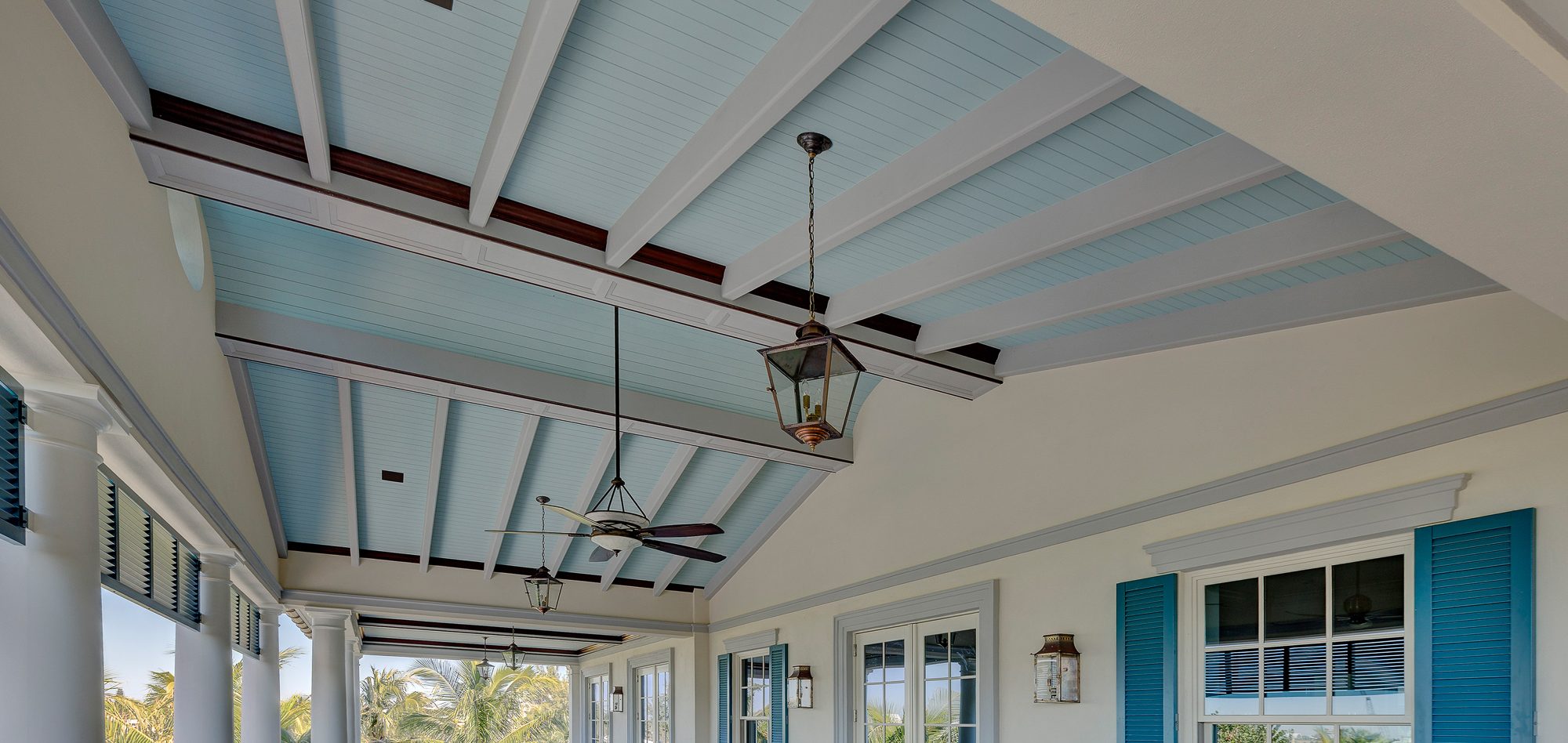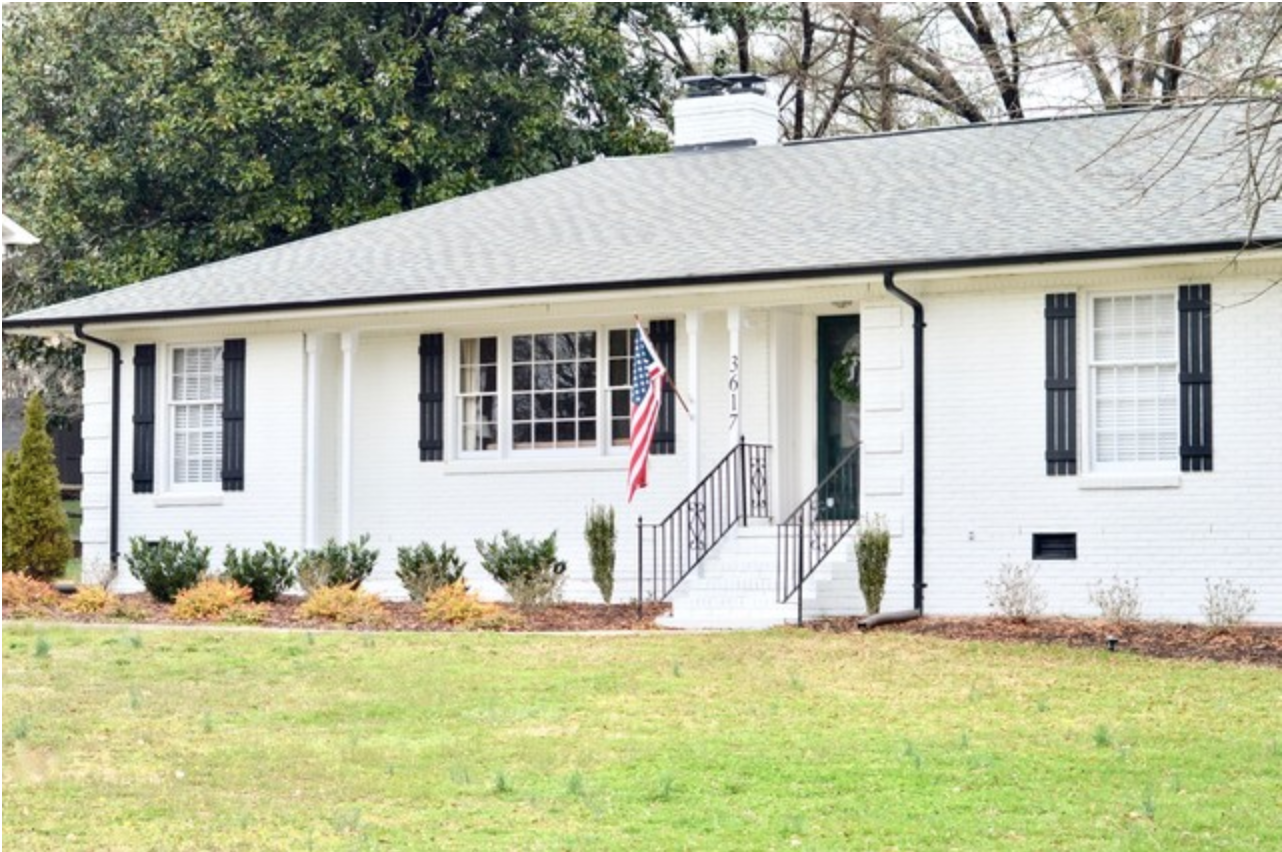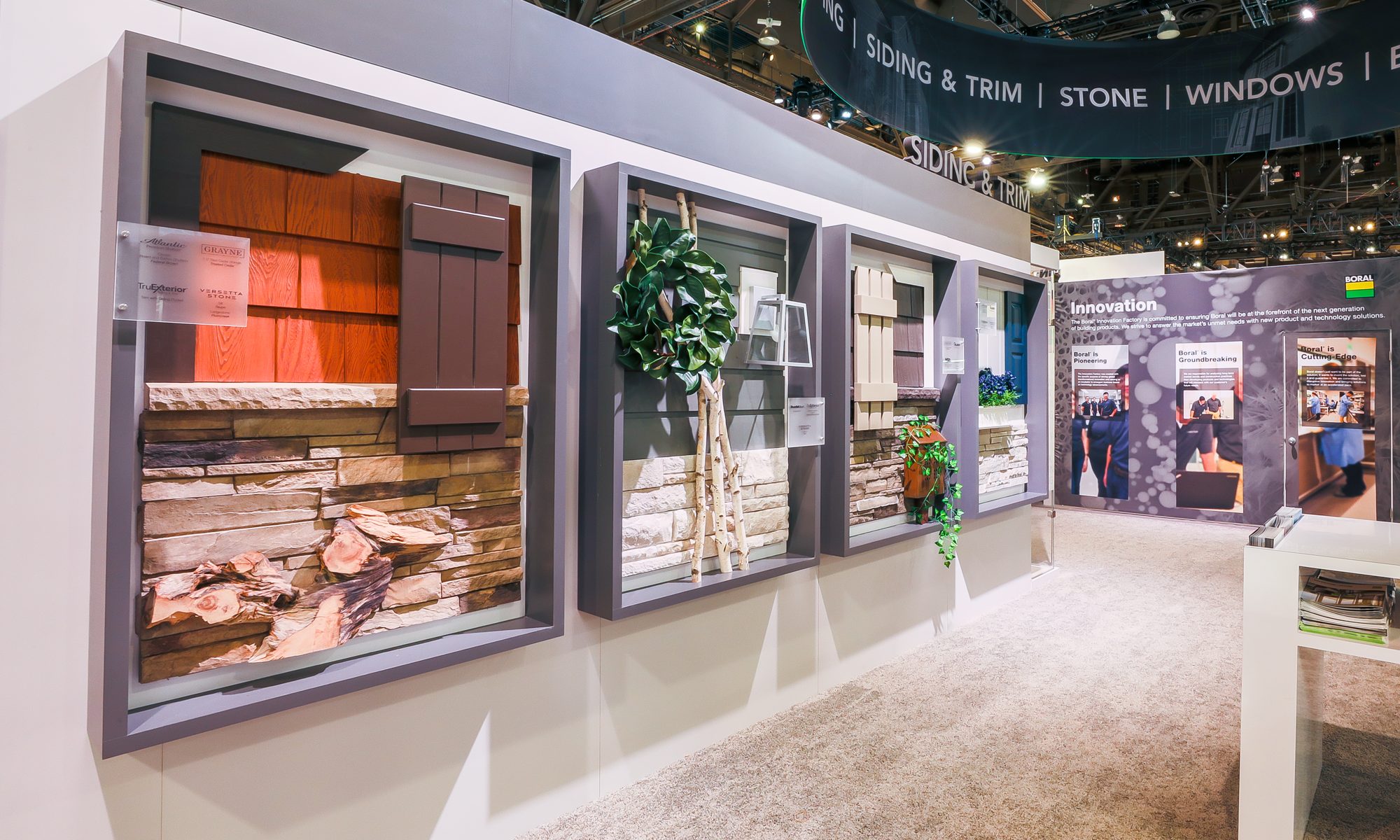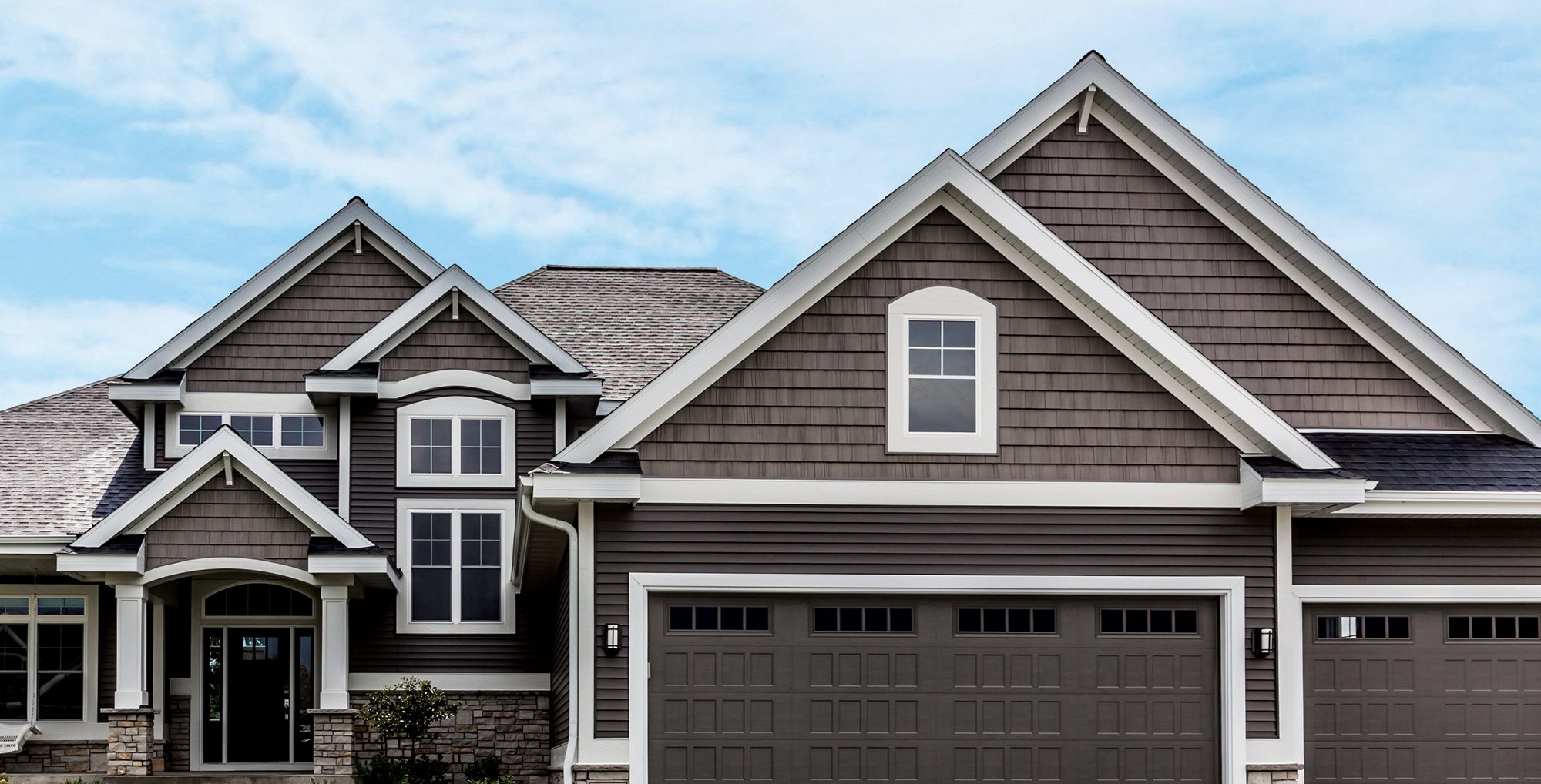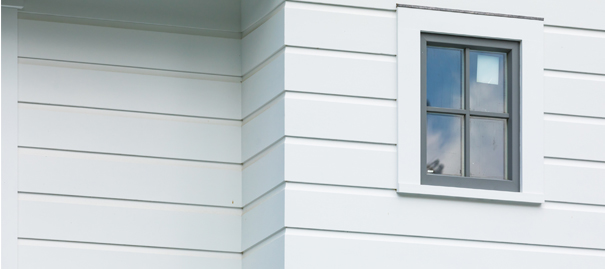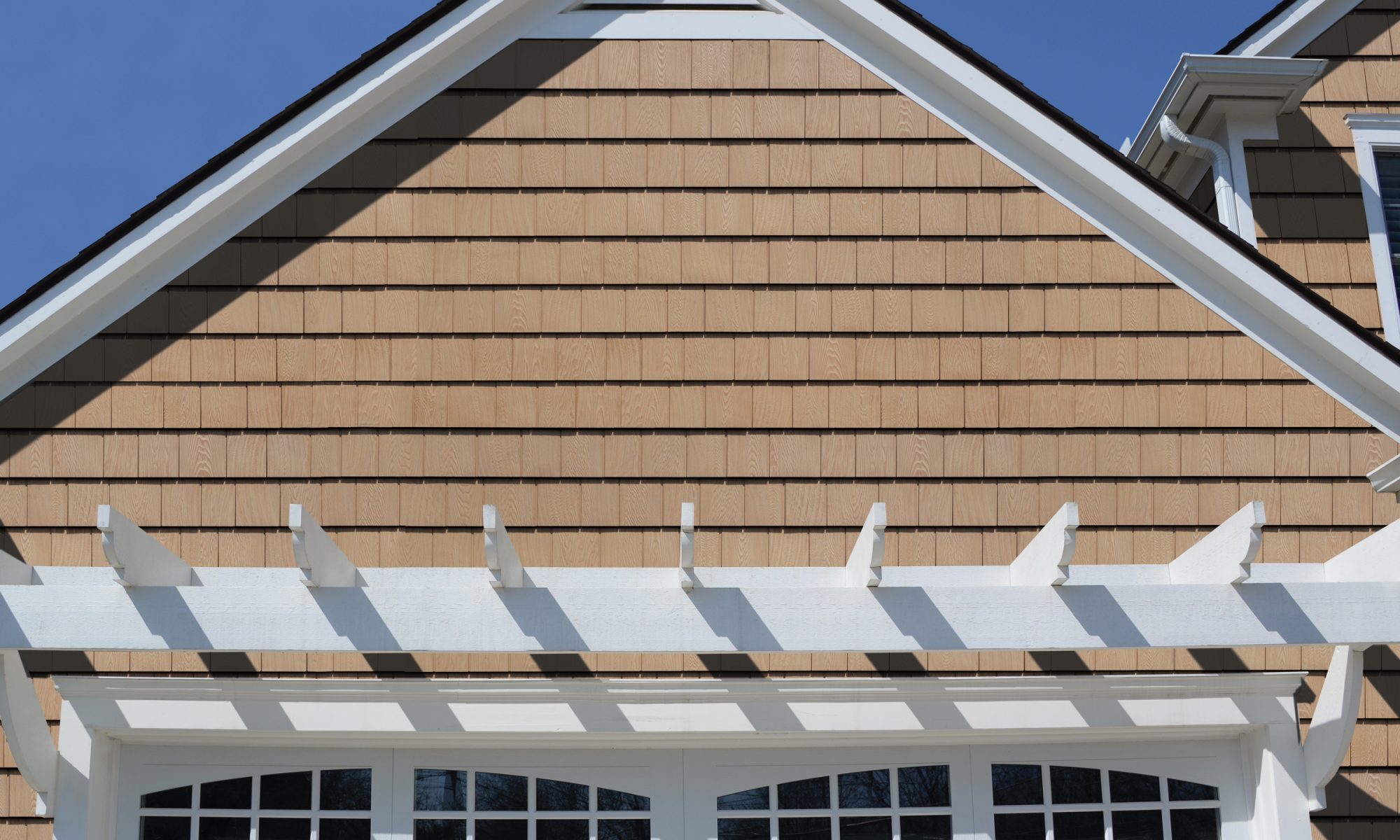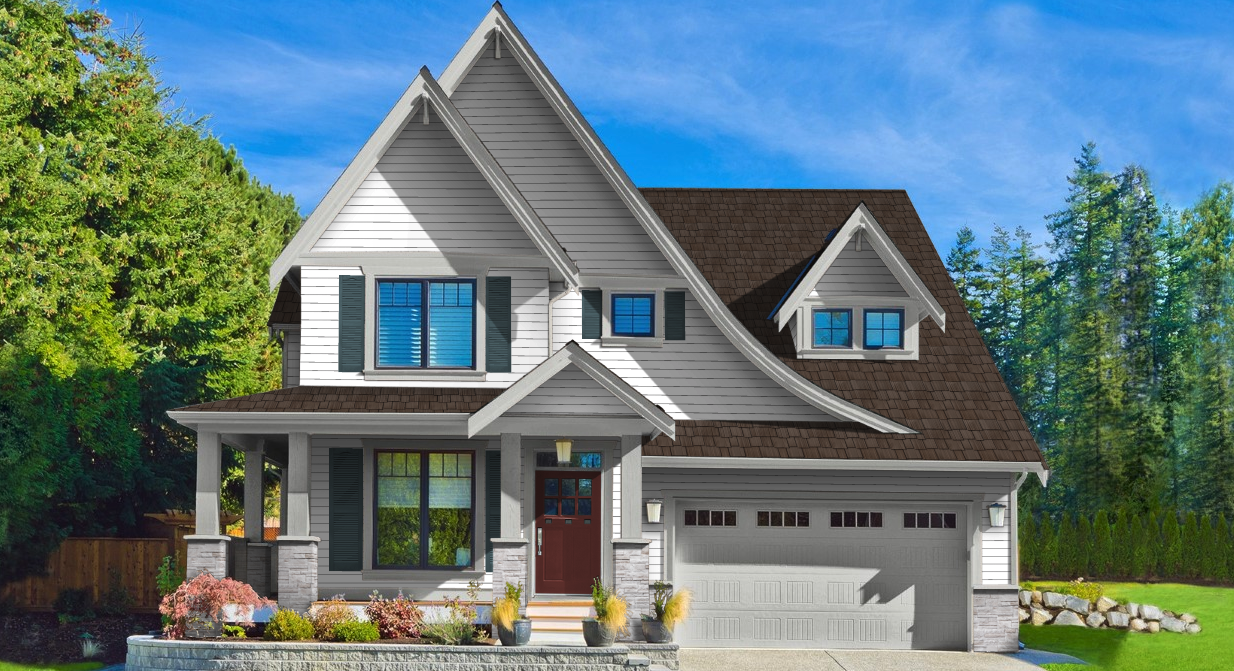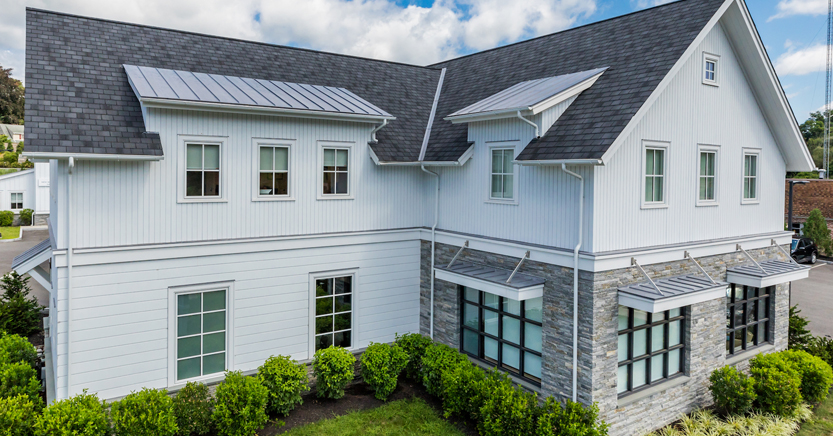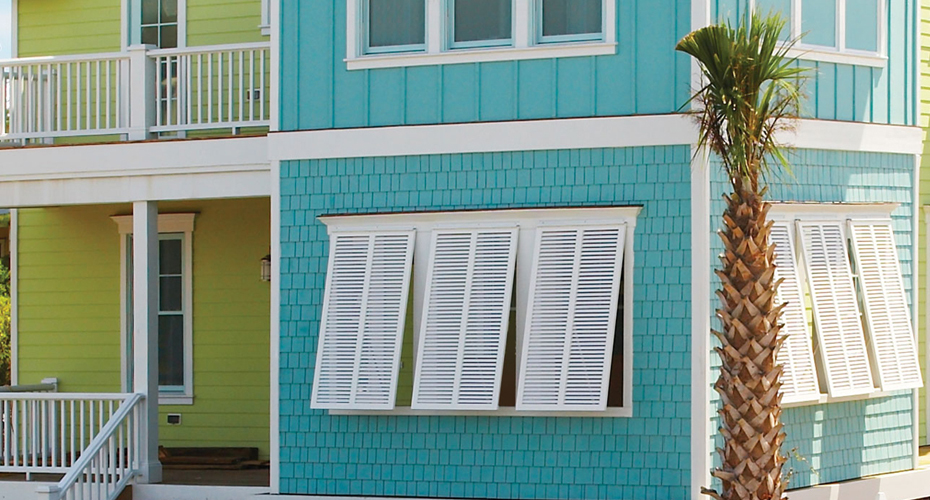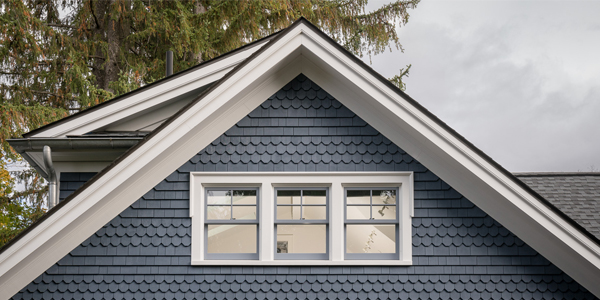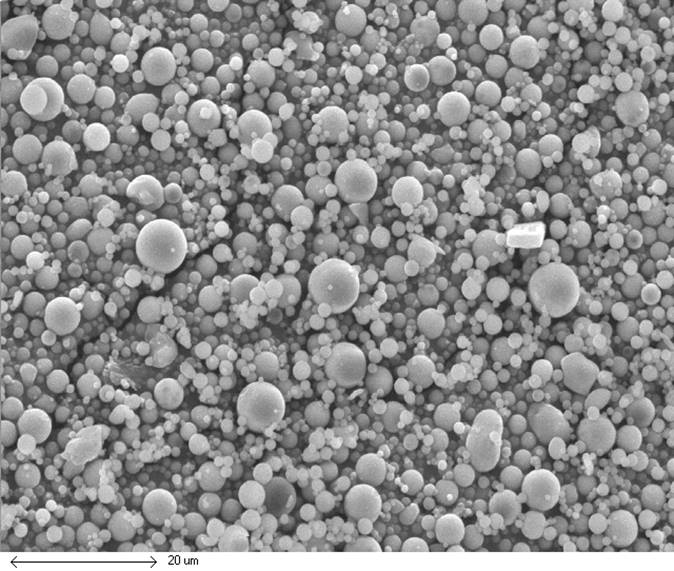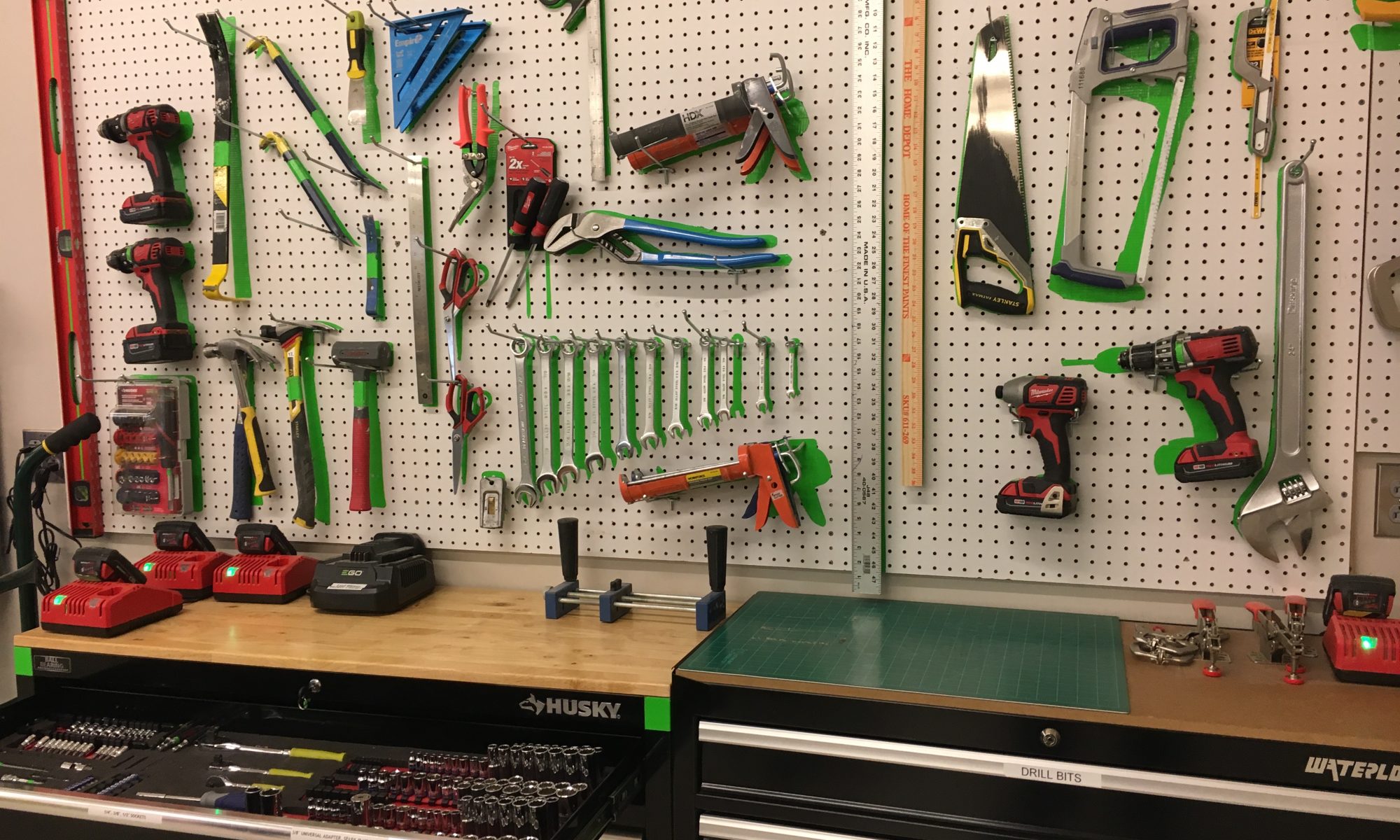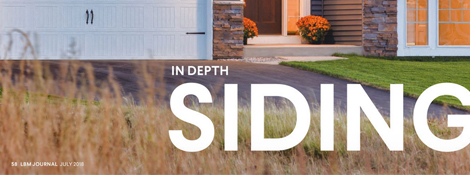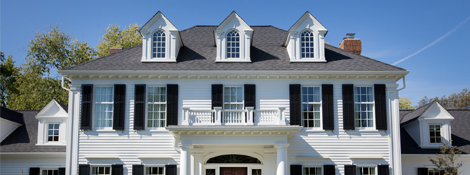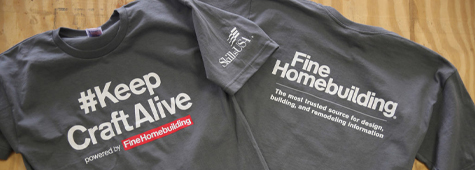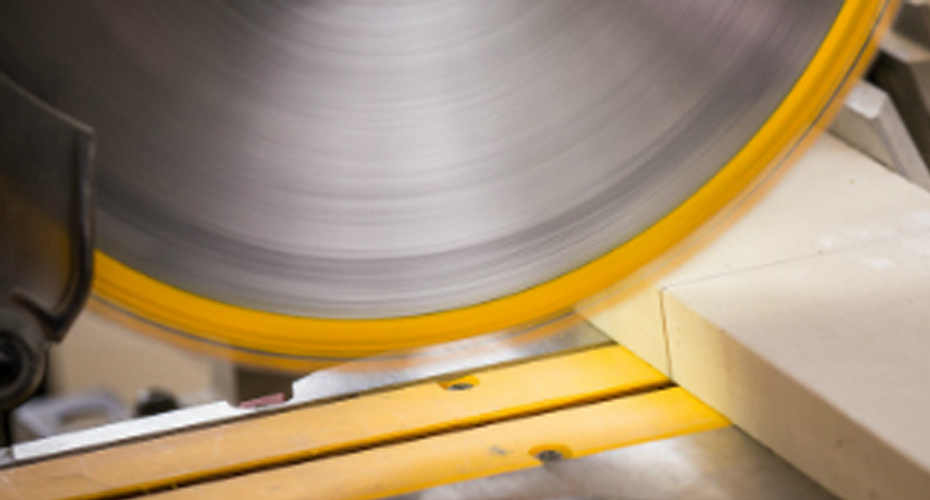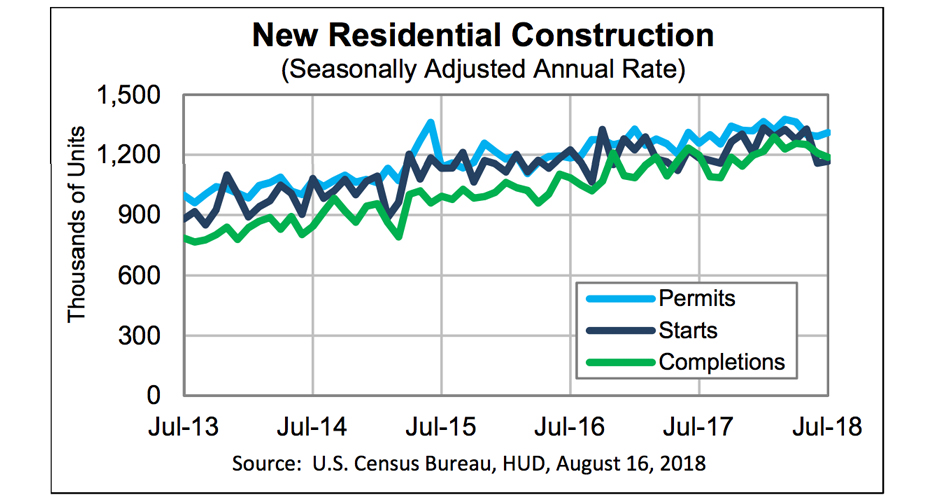When the Dokken family decided they needed a larger home for their growing kids, Trisha Dokken knew she was going to buck the style trends of her Minnesota locale and opt for the modern farmhouse she had craved for some time.
Dokken worked closely with her builder, Nate Moran of KLS Construction, to select the products and design elements that would achieve the look she desired. The result is a cozy-yet-fresh interplay of white shiplap, weathered woods, crisp stone, and striking blacks.
On the exterior, Dokken’s vision comes to life with white board-and-batten siding and black-framed Marvin windows. Moran introduced his client to Versetta Stone, having used the product, which installs with nails or screws like traditional panel siding, on a previous project. Dokken liked the look and chose the Ledgestone profile in the Mission Point colorway, whose white-gray tones coordinated perfectly with the siding.

Along with the posts and garage, the builder wrapped the lower half of the entire house with the stone siding; because the home backs up to a golf course, the couple felt it was important to ensure the rear aesthetic was as pleasing as the front.
Inside, Moran used the same Ledgestone to create the two-story fireplace, mirroring the exterior while breaking up the shiplap on the walls. A hand-poured concrete hearth and salvaged-wood mantel complete the look.

“The fireplace worked out really well,” Dokken says. “The craftsmanship is great; no one can tell its faux stone. It really did make the fireplace the centerpiece of the room.”
Salvaged wood and local sourcing were key components throughout the house. The interior shiplap was made with real pine by a local sawmill; in the bonus room, four handmade bunks are built into the wall with weathered oak shiplap. A local craftsman handmade the barn doors with reclaimed barn wood, and the exquisite stair rails were locally hand-welded. Dokken’s co-worker made the double vanity in the master bedroom with red pine and a white oak top; layered finishes and burnishing helped create a weathered, rustic look.

Black accents in nearly every room, from the gridded shower door to pendant and vanity lights to cabinet hardware, contrast perfectly with the white and wood that otherwise dominate the modern farmhouse décor.
Though the home is less than two years old, the design decisions lend a decidedly vintage feel. “When you come in you get the feeling you’re being taken back to a simpler, quieter time,” Dokken says.
View more inspiring images from around the Dokkens’ home on their Instagram page, Northmade Farmhouse.












